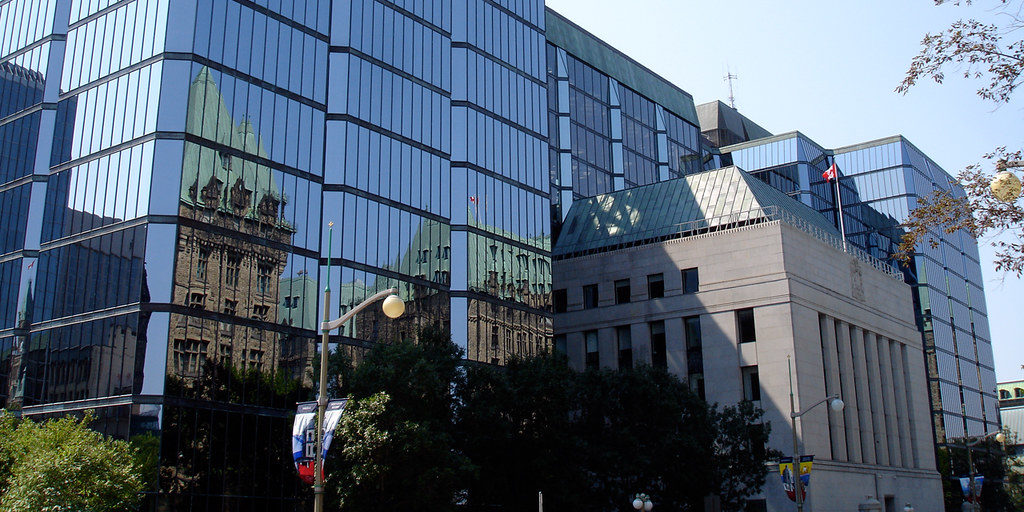Our current round of inflation has sparked a deluge of alarmism.
Inflation is commonly characterized as an unmitigated evil that must be stamped out with whatever methods are most handy and efficient without considering the collateral damage that those methods might bring about. The inflation-fighting regime that has been in place for the past 40 years or so has been a reaction to the “Great Inflation” of the 1970s that reached double digits. That inflation got into the Canadian and American psyche much like that of the “runaway” inflation of the 1920s has dominated the thinking of German policy makers ever since. In the North American case there has been a huge overreaction that has caused a growing torrent of negative side effects.
A relationship between price increases and wage increases has long been recognized. The mainline observation is that when inflation gets to a certain level it provokes wage increases and those increases provoke further inflation. The generally accepted conclusion of conventional economists from that observation is that when wages are seen to be increasing in response to price increases, immediate action must be taken to suppress the price increases. This action, it has been observed, will suppress wages and prevent “runaway wage-push inflation” and save us all from calamity.
In this scenario little attention is paid to the cost of wage suppression in the service of price control. Nor is much attention paid to the dynamics of wage suppression. It has been frequently noticed, however, that during the decades of price control at whatever cost, strikes have all but disappeared and the labour movement has decreased substantially in numbers and influence.
The critical dynamic appears to be that two per cent annual price inflation has little or no effect on the average worker’s well-being in the short run and so those workers see little reason for engaging in industrial conflict in order to protect their situation.
Being unable to mobilize the rank and file, labour leaders are unable to negotiate improved conditions or achieve political concessions. In the long run, the results are clear. Labour’s share of the national income declines.
Taxes on corporations and the wealthiest individuals also decline as do the ability of provincial budgets to support public services. Funds for education and recreation, for example, decrease. In response, university fees increase dramatically and services that were originally free and available to all – such as parks and conservation areas – are forced to charge for admission.
In the United States, the result has been the abandonment by large numbers of working people of the one-time worker-friendly Democratic Party in favour of a tyrannical business magnate who presented (and still presents) a real danger to the future of American democracy and the stability of the world.
This argument, no doubt, will be attacked for being simplistic, for lacking nuance. I plead guilty. But the dots that I have connected are clearly there. To what conclusion does the argument lead? I suggest that our political and economic future depends upon us arriving at a new vision for fiscal and monetary policy. We need policies that will, at the least, restore the economic and social equity of the 1970s. During that era, workers were militant, wages advanced smartly and unions had clout not only in negotiating with employers but also in negotiations over public policy.
If, for example, five per cent inflation will enable us to restore the social and economic balance that existed in the decades after World War II, then that is what we should shoot for. There is a risk that it will get out of hand, but knowledge about both fiscal and monetary policy has increased considerably since the 1970s and has accelerated during the pandemic. That knowledge should be sufficient to effectively manage an inflation target, for example, in the four to six per cent range. Those who argue the contrary should be expected to produce their theoretical and empirical evidence rather than asking us to consider it to be self-evident.
As things stand now, a single-minded focus directed at creating a near-freeze on inflation unduly restrains the living standards and bargaining power of the majority of Canadians and places our economic and political stability in danger. In addition to inflation, we need to talk about how to effectively balance the objective of price control with the objective of achieving a more equitable distribution of income, wealth, security, stability and infuence.
At present, Finance Minister Chrystia Freeland is considering a renewal of the Bank of Canada’s two per cent inflation target. She is also considering a proposal to give the BoC a dual mandate to pursue both price stability and full employment. Conservative and business interests approve of the two per cent mandate and oppose the dual mandate.
If they prevail, labour is in for another five years of low wages, low political influence, costly government services and the increasing transfer of income from the working class to the burgeoning billionaire class.




